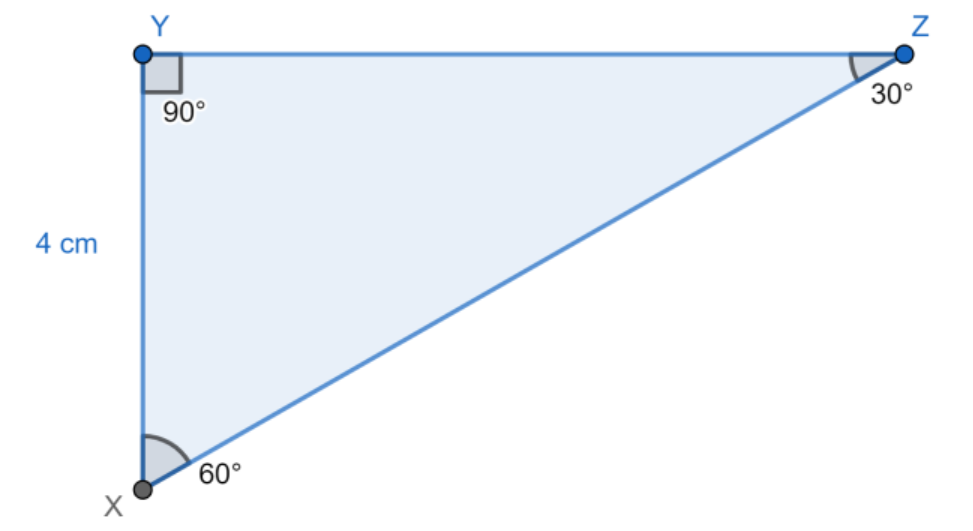Question
Question: In \(\Delta XYZ,\angle XYZ = {90^ \circ },\angle YXZ = {60^ \circ },\angle YZX = {30^ \circ }\) and ...
In ΔXYZ,∠XYZ=90∘,∠YXZ=60∘,∠YZX=30∘ and XY=4cm then find XZ.

Solution
In a right-angled triangle the sine of an angle is the length of the opposite side of an angle divided by the hypotenuse of the triangle. Here we need to calculate the hypotenuse of the triangle. So we should use this formula to calculate the hypotenuse by replacing the sine value and length of the opposite side of the angle. From the trigonometric table, we know that sin30∘=21.
Complete step by step solution:
From the figure, we can see ΔXYZ is a right-angled triangle because ∠XYZ=90∘.
Here, ∠XYZ=90∘,∠YXZ=60∘,∠YZX=30∘ and XY=4 cm.
We need to find the value of XZ i.e. the value of hypotenuse of the triangle ΔXYZ.
Here the base of the triangle is YZ and perpendicular is XY.
sin∠YZX is the ratio of side XYi.e. the perpendicular of the triangle and the hypotenuse of the triangle XZ in ΔXYZ.
First, we calculate the sine value of ∠YZX. We take the value of sin30∘from the trigonometric table.
∴sin∠YZX=sin30∘=21.
According to the formula of sine of an angle we have:
sin∠YZX=XZXY
Taking the unknown value i.e. side XZ on the left-hand side of the equation we get:
⇒XZ=sin∠YZXXY
Replacing the required values in the above formula we get:
∴XZ=214
⇒XZ=4×2
⇒XZ=8 cm
Hence, the required value of the side XZ is 8 cm.
Note: One should be well acquainted with the trigonometric table. Calculating the sine of the angle is very important over here. Much redundant information is also given. So choosing the correct information i.e. which angle to use to find the unknown side is very crucial. This method is useful only for right-angled triangles.
